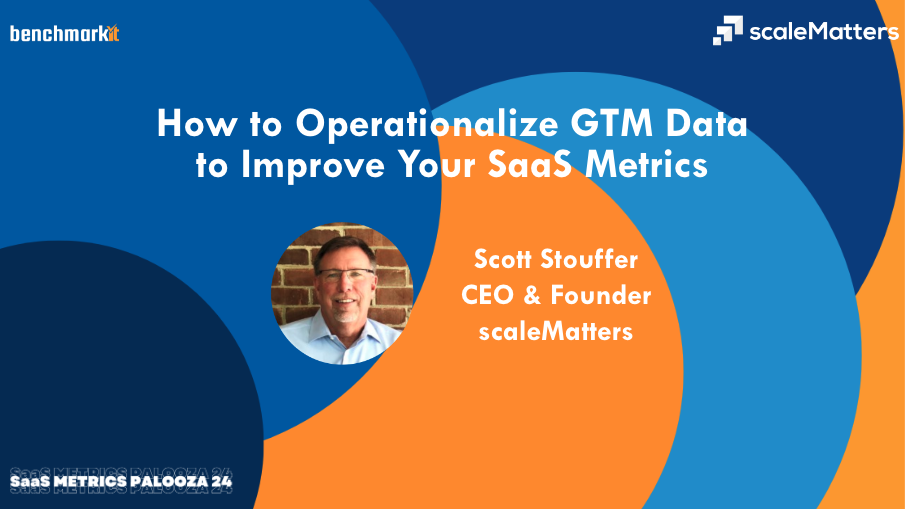How can modern GTM analytics tools help businesses react more quickly to market changes compared to traditional data storage, especially when companies and markets are changing fast?
Traditional data warehouses often feel outdated—monolithic systems designed for a slower, more predictable business environment.
In this interview, Janet Gehrmann from Scoop Analytics and Tim Mann from scaleMatters delve into the challenges of relying on traditional data warehouses for Go-to-Market (GTM) analytics.
They discuss why GTM reporting is essential, the key requirements for effective analytics, and the limitations of conventional setups. Additionally, they explore alternative solutions that provide greater speed, flexibility, and actionable insights.
Read on for their valuable perspectives in the Q&A below.
What are three reasons that make Go-to-Market (GTM) reporting and analytics essential for businesses?
- Tim Mann: “The first would be to meet board requirements. The second component to that is just improving go to market performance. The third reason for go to market reporting is from a model perspective. Every revenue leader is looking at predictability in the business. So you need the reporting to be able to build the model, so that you understand, if I put in $1 here, I'm going to expect to get $2 here and be able to model that out.”
- Janet Gehrmann: “Agreed on the above - I really liked how you laid it out for the board reporting. I’d also add accountability as one of the primary reasons that I think of going to market reporting. You need to understand both performance, and predictability. If you've got a KPI, you have to know, are we getting there? Are we not? Are we close to hitting it? Are we exceeding it? And in order to be able to really measure performance, you have to know how it's going, and that's one of the primary reasons for reporting.”
What are the critical requirements for effective GTM reporting and analytics?
- Janet Gehrmann: "You need data and systems. Whether it’s Salesforce or HubSpot or literally hundreds (thousands?) of other tools I’ve seen in GTM stacks, you need an effective way to gather data. These stacks are limited to just CRM and sales tools either - you need marketing, customer success, finance, product, and other data too.
- Tim Mann: “There's also another layer to that is the processes to get the data in the system right. So you know what we're working with humans, and humans can easily make process mistakes.. So what is, what is what? What is the human work to get the data into the systems, and then what's automation to get everything into the system? It is important to have all of that mapped out.”
What are the common problems with using traditional data warehouse setups for Go-to-Market (GTM) reporting and analytics?
- Janet Gehrmann: “The problem isn't with the data warehousing set up specifically, the problem is more of how people think through these projects. You decide to kick off a project now, Q3 2024. We’re in the middle of Q3 right now, you start the project. You start outlining your requirements. In Q4 you start to kick it off. Get the tools. You start to get full data into a specific data warehouse. Get it out through ETL. You start to think through, what are all the different processes that we need to put in place? Get the right team members to start up. Q1 2025 you might get your first report, or first bit of data fully into the data warehouse.
And then by Q2 2025 you've got the report that you built in - and it's been six months. Your business has changed. You've added a new data source. There's a new custom column. So while it's built for a specific point in time, it's not built to iterate and scale. And oftentimes you don't have the engineering you may have the engineering talent, but do you really want them to be focused on we just added outreach or GA for Google Analytics, just updated to GA four. Staying on top of all the changes into the business systems can take a significant amount of time, and that's why it's not that the projects are built to fail, it's that the projects are built for a point in time, and the one constant is change.”
- Tim Mann: "Revenue leaders inside of these companies are trying to solve problems like today, and they can't necessarily wait, to your point, six months to get the right information that they need. So when you think about time to value, people underestimate the time that it's going to take to get the value out of investing it in resources to get them the information they need. And then in the meantime, what does that look like, and how are they answering those questions and solving those problems? So the speed, the speed and confidence in the data and the reporting, I think, are two big factors that I see people think about as they make these decisions. "
How can companies overcome the main challenges of using traditional data warehouses for GTM analytics?
- Tim Mann: “Go to market specific analytics platforms, which may take a little bit of instrumentation to get going, but they ultimately enable questions to get answered super fast. Leaders have questions about performance, about where there's issues these go to market specific analytics platforms can surface insights very quickly and so that leaders can take action faster. You want something more sophisticated than manual spreadsheets, but enterprise data warehouse setup is going to take too long and be too costly.”
What actions can be taken that enhance business performance and decision-making?
- Janet Gehrmann: “You need to make sure you have alignment. You don't want the CMO and CRO to have different KPI’s, that don’t align with what the CEO reports on.I've seen companies where one person tries to make something work and doesn't have full buy-in from others, and then you get constant questions and meetings around, why are we using this metric? What about this? Instead of discussing whether you know Q3 versus Q4 is better, you end up discussing, ‘Well, should we have changed the sales process this way or not?’ And their goal has to be alignment. At some point you have to have an overall executive saying, Look, we need to choose a measurement. It doesn't really matter if we use inches or centimeters. It matters if one is going up or one is going down. And having both that alignment and really strong executive leadership at the top are, I think, critical to making sure that all that this exact path works well and that you don't do it in a silo.”
- Tim Mann: "It's like a framework for thinking about and building your data strategy, but execution is key. We align the questions we ask during strategy with the implementation of a data structure that supports it. On the tech side, this means configuring your sales, marketing, and customer success technology to capture all the necessary metadata, which fuels the reporting. Additionally, it's crucial to establish ongoing data integrity protocols to prevent duplicates or missing data."
How is the GTM Data Strategy executed effectively?
- Tim Mann: “Some of the overarching themes here are alignment and confidence, and being able to tell a story with the data, when you combine those things like, that's a crux of all of it, and then you have the time, and efficiency, and speed. and cost factors that go into that. But I think, like, those are the main considerations.”
- Janet Gehrmann: “Flexibility and iteration. In the past In the past couple years we’ve seen covid, the SVB crash, interest rates sky rocket, and more. You need flexibility built in, so whether it’s a company change or macroeconomic change, you’re still able to thrive”
Summary of Scoop Analytics and scaleMatters

Scoop Analytics stands as a modern data processing tool with its agile and intuitive analytics platform. It simplifies the complexity of data integration and analysis, offering features that are easy to use yet highly effective in delivering actionable insights. These features help businesses respond to market changes swiftly and with precision, ensuring that their data handling capabilities always align with business needs.

scaleMatters has carved a niche in the Go-to-Market (GTM) analytics space, particularly among PE-backed companies. They provide robust, actionable insights that dramatically enhance operational efficiencies. Their approach is grounded in a deep understanding of the challenges businesses face in aligning marketing and sales efforts, making their solutions not just powerful but also highly relevant to their clients' needs.
Conclusion
As the landscape of data analytics evolves, the limitations of traditional data warehouses become apparent—not just as technological setbacks but as strategic roadblocks. Insights from industry experts like Tim Mann, coupled with innovations from platforms like Scoop Analytics and strategic initiatives from scaleMatters, underscore the necessity of transitioning to more agile, insightful analytics solutions.
This shift from traditional to modern platforms is more than a technological upgrade; it's a strategic transformation essential for businesses aiming to thrive in a data-driven era. By embracing these advanced tools, companies can lead the way in innovation, efficiency, and strategic foresight, ensuring they not only keep up with the pace of change but set the pace themselves.

 scaleMatters
August 21, 2024
scaleMatters
August 21, 2024





